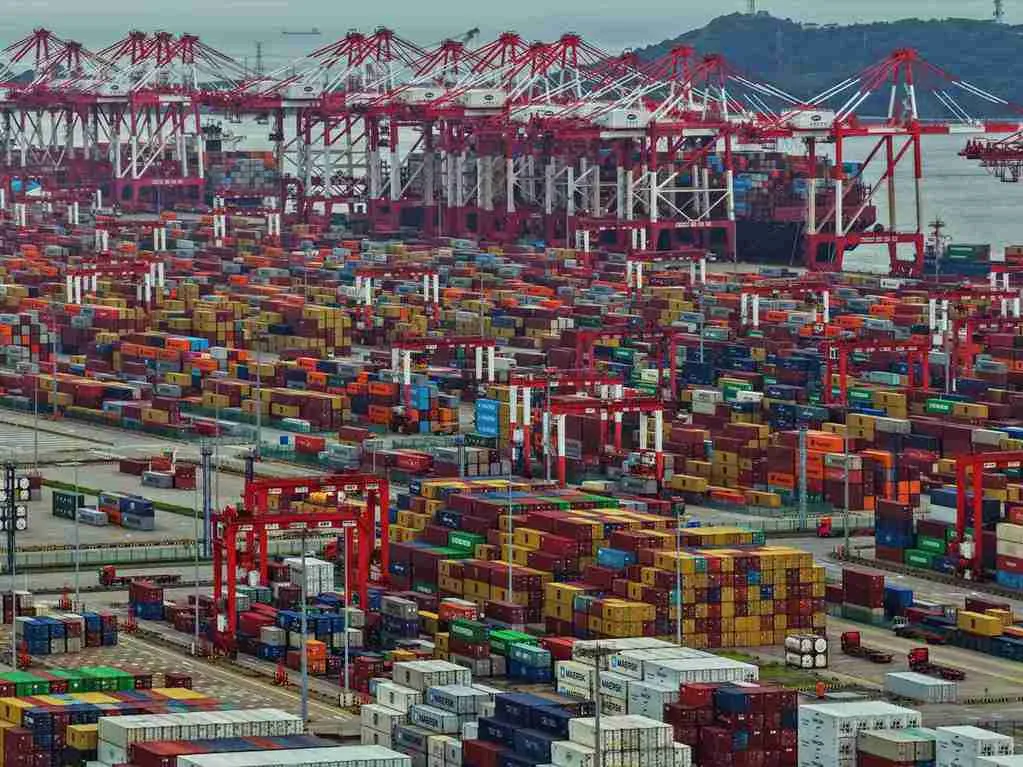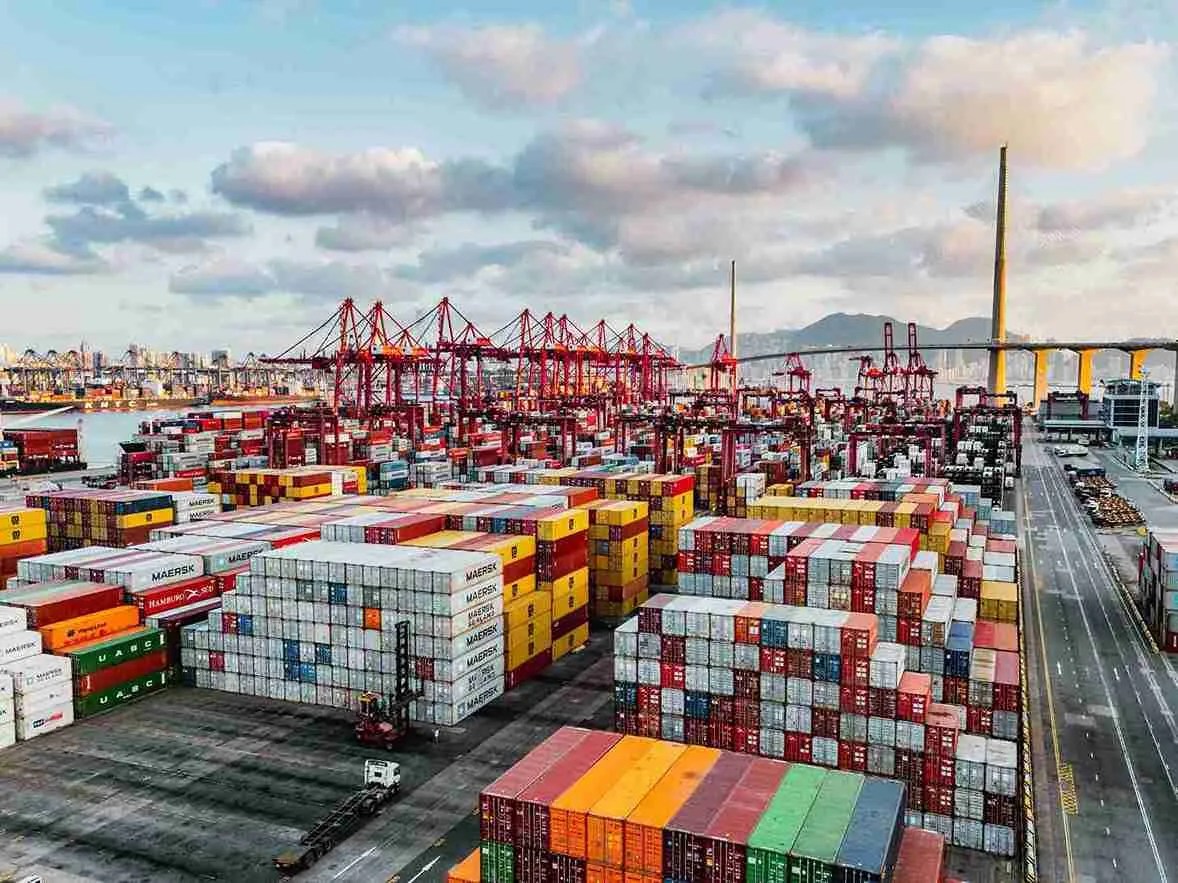Ocean Freight Rates Surge in Early November 2025: Defying Weak Demand in Global Logistics
Amid persistent inflation, slower consumer spending, and incomplete post-pandemic recovery, ocean freight rates surged sharply in early November 2025. According to Freightos Weekly Update, rates on several key trade lanes jumped by 40-50%, even as global shipping demand remains subdued and vessel overcapacity continues from Q2 2025.
This unexpected rebound has raised questions among shippers and forwarders, especially Vietnamese exporters trading with the US and Europe: Is this merely a temporary technical adjustment, or does it signal the start of a new pricing cycle in global ocean freight?
1. Ocean Freight Market Overview - Early November 2025
Following the General Rate Increases (GRIs) implemented on November 1, freight rates rose sharply across most East-West lanes, according to the Freightos Baltic Index (FBX):
2. Why Prices Are Rising Despite Weak Demand
Both Freightos and the National Retail Federation (NRF) highlight three key factors driving this price uptick:
2.1. GRI and Blanked Sailings Strategy
Major carriers are intentionally cutting sailings (blank sailings) to control available capacity. The goal: prevent spot rates from collapsing to the early-October lows on the transpacific trade.
2.2. US-China Trade Policy Uncertainty
The US Supreme Court is reviewing the legality of tariffs imposed under the International Emergency Economic Powers Act (IEEPA). This has led many importers to delay shipments pending the ruling, creating irregular shipping flows and short-term demand spikes.
2.3. Oversupply Meets Lunar New Year Expectations
Despite ongoing fleet expansion, carriers expect demand to rebound ahead of Lunar New Year (Jan-Feb 2026) as shippers frontload cargo. This seasonal factor supports rate stability through early 2026, at least temporarily.
3. Impacts on Vietnamese Exporters and Importers
- Rising Logistics Costs: On the Vietnam-US West Coast route, rates have increased 40-45% within two weeks, raising total export costs by up to 5% per shipment.
- Price Volatility and Planning Challenges: With weekly GRIs and rapidly changing spot rates, long-term rate negotiations have become more difficult for shippers and forwarders alike.
- Supply Chain Ripple Effects: Higher import costs for components and materials are squeezing manufacturers, particularly in electronics and apparel, impacting Vietnam’s export competitiveness.

4. Real Logistics’ Recommended Strategies
Real Logistics suggests that Vietnamese exporters and importers adopt a proactive approach:
- Closely monitor the Freightos Baltic Index (FBX), especially FBX01 (Asia-US West Coast) and FBX11 (Asia-North Europe).
- Lock short-term contracts (2-3 months) during high-GRI periods to stabilize pricing.
- Diversify gateways, split shipments through Singapore, Port Klang, or Laem Chabang to reduce dependency on one main port.
- Optimize container loads and shipment timing, consolidate FCL shipments or schedule departures mid-GRI cycle when rates soften.
- Explore alternative modes, such as Asia-Europe rail routes via China and Russia for high-value goods that require faster transit.
5. Market Outlook for Late 2025
Freightos forecasts that:
- Rates may soften slightly by late November, but another increase could follow in early 2026 ahead of Lunar New Year demand.
- If carriers continue their capacity discipline, average freight rates could remain above 2024 levels.
- Reports of Houthi forces halting attacks in the Red Sea suggest a gradual return of vessels to the Suez Canal, which could add capacity and pressure rates downward in Q1 2026.

6. Conclusion
Ocean freight prices are moving against market fundamentals, driven largely by carrier capacity management rather than real demand recovery. For Vietnamese exporters and importers, this period is a stress test for logistics planning and supply chain agility, requiring close monitoring of freight indexes, flexible contracting, and strategic routing.
Real Logistics will continue to provide weekly updates based on Freightos insights, helping businesses anticipate global freight trends, plan shipping costs effectively, and strengthen their supply chain strategies.
—————————————
Real Logistics Co.,Ltd
👉 Facebook: Real Logistics Co.,Ltd
☎️ Hotline: 028.3636.3888 | 0936.386.352
📩 Email: info@reallogistics.vn | han@reallogistics.vn
🏡 Address: 39 - 41, B4 Street, An Khanh Ward, Ho Chi Minh
G2 Floor, No. 51, Quan Nhan Street, Thanh Xuan Ward, Hanoi

